Cultural Resources
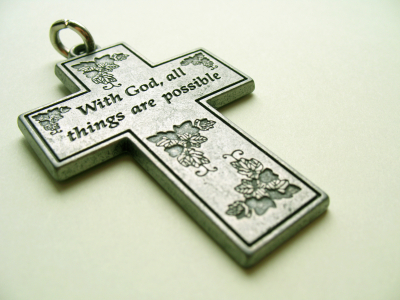
REVIVAL
CULTURAL RESOURCES
Sunday, October 7, 2012
The African American Lectionary Cultural Resource Team
(See the interview with Revivalist Charles E. Booth featured below.)
| We cannot organize revival, but we can set our sails to catch the wind of heaven . . . —G. Campbell Morgan |
I. Etymology
Revival re viv”al/, n. from revive. The act of reviving, or the state of being revived. Specifically: (a) renewed attention to something, as to letters or literature. (b) renewed performance of, or interest in, something…(c) renewed interest in religion, after indifference and decline; a period of religious awakening; special religious interest. (d) reanimation from a state of languor or depression; --applied to the health, spirits and the like. (e) renewed pursuit or cultivation, or flourishing state of something, as of commerce, arts, agriculture. (f) renewed prevalence of something, as a practice or fashion. (g) (law) restoration of force, validity, or effect; renewal; as, the revival of a debt barred by limitation; the revival of a revoked will, etc.1
Arthur Wallis wrote: “We cannot go to the Bible to see how the word ‘revival’ is used, for it is not found there…The nearest equivalents are ‘revive’ (or quicken) and ‘reviving,’ but these may be applied to individual awakening, and are not always synonymous with what has been called, by common consent down the centuries, ‘religious revival.’”2
Modern English usage of the word largely descends from the following:
1. The French word “revivre”
2. The Latin word “revivere”
The word ‘revive’ is made up of two parts: ‘re’ meaning ‘again’ and ‘vive’ meaning ‘to live.’
Thus ‘revive’ means ‘to live again, to come or be brought back to life, health, or vitality.’” Coming into general usage in the late seventeenth and early eighteenth century, ‘returning to life’ became associated with God awaking and empowering a lethargic church. This particular English usage emerges strongly in early Puritan works. The word ‘revival’ was first used in English by Cotton Mather in 1702 in his massive work Magnalia Christi Americana. On into to the mid-nineteenth century, we find ‘revival’ as an ‘empowering of the saints.’”3
Usage
While the etymology of “revival” suggests the return of “backslidden believers,” its modern usage is largely different. While the “etymology” of a word unquestionably has strong influence upon its contemporary meaning, usage probably has a greater immediate influence. Wallis reluctantly writes, “The meaning of any word is determined by its usage.”4
Moreover, in the last one hundred and fifty years the word “revival” has been used to describe:
1. Evangelistic meetings
2. Theological movements
3. Unusual phenomena
4. Social reform.
Since both “etymology” and “use” define the broader meaning of a particular word, “revival” continues to be complicated to effectively articulate.5
Kathryn Teresa Long wrote:
II. The Historic and Present State of Revivals
Previous cultural resource units on the Lectionary (2009, 2010) have referenced thing such as the Great Awakenings and their historic impact on what we now know as revivals. This year we lift the following revival history:
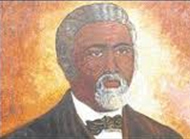 George Liele |
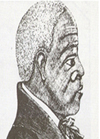 Andrew Bryan |
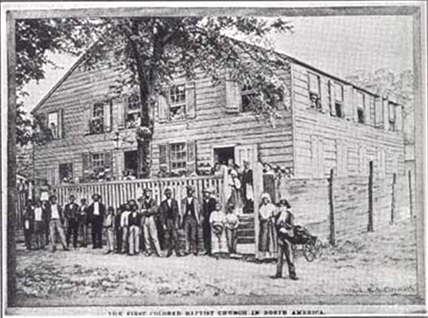
An image of the First Colored Baptist Church in North America
Every year African American churches still hold revivals. Gone, in most churches, are the seven-day revivals, and in their place are two-and-three-night revivals. Guest churches are still invited. Members are still encouraged to invite and bring their unsaved family members, neighbors, co-workers, friends, and acquaintances. In some churches, there are even canvasing periods where small groups of faithful believers go out into the community, into jails, and wherever they can gain entrance and invite seekers to come to church during revival. There are revival prayer intercessors whose job is to pray for the lost, the saved, the preacher, and the success of the revival. There may even be special guest soloists, now commonly called Psalmist, invited to swell the crowd and rev up the crowd before the preacher stands behind the sacred desk.
Over the last quarter century there has been less and less of a focus on saving souls during revivals. Now, more and more, church members come to be revived and/or to hear preachers, especially those who are well-known and may even be television personalities. Gone are the mourners’ benches (places where those seeking salvation were placed during revivals in some denominations) and the strong push to have large numbers of folk coming down revival aisles asking, “What must I do to be saved?” Surely the saints need revival; however, given that revivals no longer focus on soul saving, one wonders during what other period in the church year are churches keenly focused on soul saving. Although there are more African American mega-churches than at any time in history, the average church still opens its door each Sunday to fewer than 200 people. This change in focus does not bode well for the evangelism work that should be done by the church since it is obviously not being done throughout the remainder of the church year. This is crystal clear given that the average size of the majority of churches remains unchanged over the last century.
III. An Interview with Revivalist Charles Edward Booth
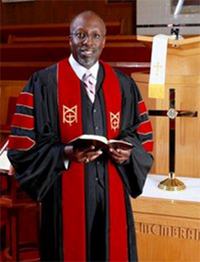
Charles Edward Booth is one of the most beloved revivalists in America. He is the pastor of Mount Olivet Baptist Church in Columbus, Ohio, where he has served for 34 years.
| Q. | Dr. Booth how long have you been preaching and how long have you been doing revivals? |
| A. | I have been preaching for 47 years and doing revivals for 40 years. |
| Q. | What changes have you seen in the evolution of revivals? |
| A. | First, they’re shorter. Revivals used to begin on Sunday morning and end on a Friday night. Now the average is 3 days. Second, there has been a change in the format. There are a lot of revivals that now feature two preachers in one night. I don’t like that format. I really don’t think that the average congregation can handle more than one sermon in an evening revival setting; they are required to make a large shift to what is said by two people. This is particularly difficult if the two preachers have radically different styles. Then, there are some formats that feature a lecturer and a preacher. Unfortunately, in this format, the lecturer often preaches too. One needs to ask, “What is the intent of doing that (featuring two preachers) if the desire is to feed the people; what is the best format?” The second format, preacher and lecturer, can work, if the lecturer just lectures. The other difference that I have noticed is in intention. A revival and an evangelistic crusade are different. The aim of a crusade is to save souls. A revival is for spiritual refreshment; to get people to fall in love with Christ again and to move people to deeper depths of discipleship and motivate people to aim for the highest quality of living in Jesus Christ. You may save souls, but I don’t think churches really prepare to save souls these days; they may deputize folk to bring their family and friends but they don’t really prepare to save souls these days during revivals. |
| Q. | What makes for a good revival? |
| A. | A period of special prayer must precede every revival. Prayer should be lifted a week or two before any revival. Then, good music is important—in fact, it’s critical. But, I have never been a proponent of churches bringing in outside choirs. The host church should provide the music and not bring in outside choirs to swell the crowd. I think bringing in outside choirs is a bit like bringing an alien spirit into a revival. Then, each church should find out what the revivalist wants to do during a revival. They shouldn’t plan the schedule of the revivalist. I remember the late, great Caesar Clark. He was a cloistered preacher. Then, there was Bob Wilson of Dallas, who enjoyed going bowling when he did revivals. Churches should take into account the preacher’s eating habits too. I used to go to homes to eat before and after revivals. I really preferred going to homes afterwards. The bottom line is, just ask the revivalist how they want to spend their time during a given week and let them do that. That will help the preacher be at his or her best before they preach. |
| Q. | How do you decide what you are going to preach for a revival? |
| A. | Ultimately, most of the time, I am going to preach for revival what I gave to the folk at my church. I may tweak the sermon or reshape it to fit a particular congregation. I look at those sermons I feel have a certain punctuation and punch that will allow the sermon to go beyond the pastoral presentation. Sometimes I take revival sermons home to preach, but most often I do the sermon at home first. |
| Q. | How long does it take you to prepare a sermon? |
| A. | Reverend J. Pious Barber said, “On Sunday night you should have a thought, a text, and an idea for the next Sunday.” Your outline and then the exegetical work, which is the most time-consuming work, comes next. Then I flesh out the outline and I write about two hours and do the full sermon. I still do it in longhand. I try to do that no later than a Thursday or Friday. |
| Q. | What are some of your most memorable revivals? |
| A. | I remember in the late ‘70s and early ‘80s I did the San Francisco City-Wide Revival and I met the late E.V. Hill. I preached during the day and he preached at night; that was memorable. Then, five or six years later, I did the Philadelphia City-Wide Revival and I was the noon-time preacher and Reverend Hill was the night preacher. We had different politics; he supported President Reagan and I certainly did not, but we got along quite well every time we preached a revival together. I learned a lot from watching him preach. Then, there were the revivals I did at Mt. Carmel Baptist Church in Philadelphia, where Albert Campbell was the pastor. I think I have enjoyed most doing revivals at New Psalmist, where Walter Scott Thomas is the pastor. I have done their revival for 40 years every year always the Sunday after Thanksgiving. I have preached in each of the four buildings in which that church has been located over the years. |
| Q. | Who are your favorite revivalists? |
| A. | First, I would say the late Caesar Clark. I heard him first in Westchester, Philadelphia, and he was and remains the most phenomenal revivalist I have ever heard in my life. I also enjoy Reverend Harold Carter of Baltimore and Reverend Bob Wilson of Dallas, who was the longtime head of the National Baptist Convention’s Foreign Mission Board. Then, E.V. Hill—he had a gift. He could just put a crowd in the palm of his hands. Also, there was a preacher that many today do not know. His name was Harold Oliver Davis. He died when he was about forty-five. He came on the radio in the 1970s. When I first heard him, in my seminary arrogance, I said, “He doesn’t have any depth, he can just whoop.” Then, one day one of my friends and I followed him two hours after hearing him preach on the radio. We went to the church where he announced on the radio he would be preaching that afternoon. I still remember; he preached “The Necessity of Religion in the Life of a Nation.” I cried. I shall never forget him. |
Thank you, Dr. Booth, for sharing with the readers of The African American Lectionary.
IV. Do We Still Need Revivals?
Are we now holding revivals just out of habit? Are they still needed? Yes and yes. Almost all African American pastors would be called on the carpet were they to announce the cancellation of revival at the churches they pastor. It would not matter that souls were not saved during these revivals, that no one was revived in ways that could be measured, that money was spent that the church could not afford to spend, and that the revival was poorly attended. For churches faced with these types of revivals, and there are more than one might think, they continue to hold revivals, likely out of habit.
Perhaps in the churches that hold revival out of habit there is something positive to be said for the hospitality and the fellowship that is likely present even at these churches. However, there are likely many other less costly occasions at which hospitality and fellowship can occur. So, why do we say revivals are still needed? If we accept that the word revival means to make live again” and to “bring back to life, health, or vitality” and the awakening and empowering of a lethargic church, then we certainly still need them! Revivals, as the above quote by G. Campbell Morgan suggests, allow the Church to “catch the wind [spirit] of heaven” as it blows where it will. However, as the quote also points out, this can only be done when our sails are properly set. So, how shall we set out sails if we really want revival and believe that they still serve a useful purpose?
To Make Live Again
From the Enlightenment, which John Caputo succinctly defines as “The 18th Century movement that eventually reduced reality to phenomena that could be measured and dissected by ‘objective human reason,’”8 to post-modernism9 which still hovers around the Church, church folk seem dizzy from trying to either figure it all out or operate in the midst of it as their God-centered equilibrium is again and again disturbed. For many in the Church, life seems to be filled with one cultural circumstance after another that has either blurred their faith lens or turned their faith walk into a series of mazes out of which there seems no escape. Prophetic discernment is needed by those who would address these souls.
These souls need revivals that address their loss of spiritual and social equilibrium. In other words, yes, there is still a need for revivals if they bring to us sermons and ministry with enough prophetic discernment to help believers traverse the modern terrain with integrity and, instead of seeking certainty about their position in the world, help believers seek with all of their hearts greater closeness to the divine and to their neighbors. Let us set our sails in this direction.
To Bring Back Health
Then there are those, who like the characters in our pericope for today, are crippled in body or in mind. One character represents those who need to have their physical health restored, and the others represent those who need to return to a healthy mindset—one anchored in God and concern for neighbor. Prophetic discernment is needed in these two circumstances too.
First, the type of prophetic discernment is needed that offers a real and practical word for people who need their physical health restored. Such discernment would be aimed at finding ways to end or convert systems that continue to make it difficult and/or impossible for people to receive basic medical care. Paul caused a man who was crippled from birth to stand upright. Today, the Christian faith community could duplicate and greatly increase Paul’s act of healing by working to obtain affordable health care for all people. In an age when so many maladies are curable and preventable, so many people are sick and dying who need discerning prophets to advocate for their wellness at the local, state, and national level.
Second, there are those whose mindsets need to be revived so that their mindsets are anchored in God and their concern is for the well-being of their neighbor. For too long the Church has been a place where many preachers have used the Word of God to keep people mentally and emotionally crippled instead of restoring their health. This crippling has been done through use of theologies and cultural indoctrination that serves to place in outsider status those who are not the most physically able, the most learned, the wealthiest, or the whitest. It is also done by drawing vitriolic lines of dissension among people who are different than what these death-dealing Bible-thumpers find acceptable. Their preaching is not of God, but instead is an admixture of humanity seeking to stand in for the divine by developing a hierarchy that keeps them in power even if it means stoning (destroying others). Those who do this seek adulation, financial reward, and the maintenance of the status quo. Unlike Paul and Barnabas, these types of preachers do want to be worshipped. We need revival to bring forth prophets who do not seek adulation but instead want others healed and made whole in every way. Such prophets would set their sails in the direction of servant leadership.
To Awaken and Empower a Lethargic Church
Finally, we need revivals to awaken and empower the lethargic Church. It is not hard to see that the voice of the Church has been muted in so many instances around the world. Where is the Church? Sex abuse by church leaders, massive poverty, street violence spirals out of control year in and year out, the government is at a stand-still, homelessness has run amuck. How has this happened given the large number of Christian churches in America? If being the Church of Jesus Christ ought to provide anything, it is the endowment of vitality (the ability to “turn the world upside down”) because of the Holy Spirit. When we say, “Lord, send a Revival,” do we really know what we are asking? Do we really mean to ask God to force us to confront through sincere repentance all of our sins, to shape us into submission so that we will only do the will of God? If so, we want revival. We want to do the work. We will accept the pain and the costs. We will set our sails to catch the wind of God.
V. Twenty-first Century Revival Ideas
(a) Use the African American Lectionary’s BIG IDEA Section. Created in 2010, the African American Lectionary’s BIG IDEA section spotlighted twenty-first century ministry ideas that are being carried out by small and mid-size churches. These twenty-first century ministry ideas can be carried out by churches seeking revival. Go to the Lectionary home page and in the upper right-hand corner of the page, click Clergy resources. On the drop-down menu, click BIG IDEA.
(b) Hook Up Kids. The phrase “I have the hook up” means that one has the social connections to achieve a desired goal. Along with seniors and those who are disabled, children and youth are the largest group in need of support from “revived” churches. Too many are still marginalized and sent toward lives of poverty and/or crime because they are not aided in thriving in school. Clearly churches can see that black children are desperately suffering due to not having the educational training they need to obtain decent jobs and contribute in basic ways in society. Churches in collaboration with schools and youth organizations such as the Boys and Girls Club, Big Brothers and Big Sisters, the Boy Scouts and Girl Scouts, and others must develop creative partnerships to help end truancy and lessen the drop-out rate in America. The church needs to make sure that our children and youth have the hook up so that they do not fall through the cracks of our broken educational system.
(c) Be Counter-Cultural. Yours may be one of the churches that gives scholarships, thanksgiving baskets, offers a small number of services for seniors, and even operates a church nursery. Good for you; all this is needed and is relevant ministry. But the next step is to move toward ministry that is not just relevant, but ministry that “turns the world upside down” (Acts 17:6). This is counter-cultural ministry. If you ask the average clergy or lay leader what are the five greatest needs of their community, if they are black, the list would probably include: jobs, a lessening of community violence, better schools, help for families in poverty, and services for seniors. Whatever the list is for your community, the ministries your church provides (hopefully in collaboration with others) should first address these needs. Your church may need a revival to assess what it is doing and then ensure that it is meeting the right needs. Then it can revive and refocus its clergy and laity to offer new ministries.
Read the book The Church as Counterculture, edited by Michael L. Budde and Robert W. Brimlow. Although the book is not primarily written with African American churches in mind, it does provide useful starting points for all clergy and lay leaders who want to discern and develop twenty-first century ministries and revivals that are not driven by culture but do respond to the needs of today’s church members and seekers.
(d) Do a Financial Assessment. Too often, church members and communities have needs that are not being met by their churches. Although churches believe that they are doing well, a quick look at their budgets will reveal a different story. If you want to determine the identity of a church, check how much it spends and on what. Each church’s identity is determined by its ministries. So, a church that spends more money on brick and mortar projects than it does on children and youth has clearly told you a great deal about its identity. Once you do an assessment of the needs of the members of your church and community, you will then need a financial assessment to make sure that the budget matches the needs. Along with this, revival preaching will be needed to build interest and participation in the new ministries that will represent your new identity.
(e) Give Revival Lecturers/Teachers the Revival Spotlight. It is now in vogue for churches to feature a lecturer/teacher during one portion of a night of revival and a preacher for the other portion. Given the lack of biblical and social-cultural literacy that is so pervasive within the Church, it is time that the lecturer/teacher, not the preacher, be given the revival spotlight. Good lecturers and teachers can offer powerful and practical solutions to so many of the problems that are harming the African American community. Such a focus by churches can begin to provide our community new ways to view revivals. Find strong teachers to address the greatest needs of your church and community. Advertise the topics of focus in a major fashion using traditional and new advertising methods. Imagine developing a tweet-fest by 20 of your members to advertise that your church will feature the leading authority in the country on how to lessen poverty or crime or financial illiteracy. Or host a community online discussion about a major issue such as the drop-out rate in your city, and follow it with a lecturer who addresses it for three nights. If the leaders of churches treat this new revival focus as critically important, congregations will treat it similarly and people will truly be revived.
VI. Songs for This Calendar Moment
“Revive Us Again,” a classic written by William P. Mackay, is still sung during revivals. Another well-known revival song, “Lord Send a Revival,” by B.B. McKinney, was written in 1927 and is also still used during revivals. The third song, also titled “Lord Send a Revival,” is a modern revival song written by Matt Redman. The fourth song, which has the same title, “Lord Send a Revival,” is from the soundtrack of the movie Sister Act 2: Back In the Habit.
Revive Us Again
by William P. Mackay
1. We praise Thee, O God!
For the Son of Thy love,
For Jesus Who died,
And is now gone above.
Refrain:
Hallelujah! Thine the glory.
Hallelujah! Amen.
Hallelujah! Thine the glory.
Revive us again.
2. We praise Thee, O God!
For Thy Spirit of light,
Who hath shown us our Savior,
And scattered our night.
3. All glory and praise
To the Lamb that was slain,
Who hath borne all our sins,
And hath cleansed every stain.
4. All glory and praise
To the God of all grace,
Who hast brought us, and sought us,
And guided our ways.
5. Revive us again;
Fill each heart with Thy love;
May each soul be rekindled
With fire from above.10
Lord Send a Revival
by B.B. McKinney
1. Coming now to Thee O Christ my Lord,
Trusting only in Thy precious word
Let my humble prayer to thee be heard
And send a great revival in my soul
Chorus:
Send a great revival in my soul (in my soul)
Send a great revival in my soul (in my soul)
Let the Holy Spirit come and take control
And send a great revival in my soul
2. Send the Holy Spirit now within
Burning out the dross and guilt of sin
Let Thy mighty works of grace begin
Oh, send a great revival in my soul
3.Send a great revival, Lord, in me
Help me that I may rejoice in Thee
Give me strength to win the victory
And send a great revival in my soul
4. Help me go for Thee, dear Lord, today
To some lonely soul that’s gone astray
Help me lead them in the homeward way
Oh, send a great revival in my soul.11
Lord Send a Revival
by Matt Redman
We’re looking to Your promise of old
That if we pray and humble ourselves
You will come and heal our land
You will come
You will come
We’re looking to the promise You made
That if we turn and look to Your face
You will come and heal our land
You will come
You will come to us
Lord, send revival, start with me
For I am one of unclean lips
And my eyes have seen the King
Your glory I have glimpsed
Send revival, start with me12
Lord Send a Revival
From the movie Sister Act 2: Back In the Habit
And let it begin in me
Lord send a revival
Lord send a revival
Lord send a revival
And let it begin in me
Well now we need a revival
to rock this world today
have it begin on another rampage
that is how we pray YAAY.
(chorus x2)13
The final selection is an a-typical revival song for African American and even non-African American churches. However, the song, “We Shall Be Free,” written by Garth Brooks and Stephanie Davis and made popular by Brooks, speaks eloquently to the type of behavior that will make clear that we have been revived as we covet the best for our neighbor and we all are made free.
We Shall Be Free
by Garth Brooks and Stephanie Davis
This ain’t comin’ from no prophet
Just an ordinary man
When I close my eyes I see
The way this world shall be
When we all walk hand in hand
When the last child cries for a crust of bread
When the last man dies for just words that he said
When there’s shelter over the poorest head
We shall be free
When the last thing we notice is the color of skin
And the first thing we look for is the beauty within
When the skies and the oceans are clean again
Then we shall be free
We shall be free
We shall be free
Stand straight, walk proud
‘Cause we shall be free
When we’re free to love anyone we choose
When this world’s big enough for all different views
When we all can worship from our own kind of pew
Then we shall be free
We shall be free
We shall be free
Have a little faith
Hold out
‘Cause we shall be free
And when money talks for the very last time
And nobody walks a step behind
When there’s only one race and that’s mankind
Then we shall be free
We shall be free
We shall be free
Stand straight, walk proud, have a little faith, hold out
We shall be free
We shall be free
We shall be free
Stand straight, have a little faith.14
Poem
Revival Remixed
Anonymous
I thank God for my unbreakable spirit. Stepped on by a thousand years of war, hate, evil and ignorance
It remains.
Sometimes up, sometimes down, almost leveled to the ground but then the Holy Ghost revives me again.
He burst through my fear, my ignorance, and my un-acceptance
to push me out of myself and into the arms of my neighbor, out of my door to those out doors and to the billions who know not education, freedom, or peace.
Revive me again. Empty me of lethargy, self-centeredness, materialism, and concern for others that never moves my feet or my hands.
Revive me from all of the isms into which I can sink, dragged by my culture and my unwillingness to be called-out for not going along to get along.
Faith, hope, and love, and the greatest of these is love. Revive my heart to love unconditionally, to love justice, and to love mercy, and to walk humbly with God.
VII. Books for This Moment on the Calendar
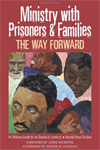 |
Goode, W. Wilson Sr.; Charles E. Lewis Jr. and Harold Dean Trulear, eds. Ministry with Prisoners & Families: The Way Forward. Valley Forge, PA: Judson Press, 2011. |
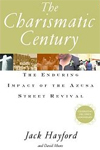 |
Hayford, Jack and David Moore. The Charismatic Century: The Enduring Impact of the Azusa Street Revival. New Bedford, MA: Hachette Digital, Inc., 2006. |
Notes
1. Online location: http://dictionary.babylon.com/revival/
2. Wallis, Arthur. In the Day of Thy Power. London, England: Christian Literature Crusade, 1956. Quoted in King, J.D. “History of the Word ‘Revival.’” Online location:
http://www.worldrevivalnetwork.com/drupal/content/history-word-revival (accessed 6 March 2012).
3. King, J.D. “History of the Word ‘Revival.’” Online location:
http://www.worldrevivalnetwork.com/drupal/content/history-word-revival (accessed 6 March 2012).
4. Ibid.
5. Ibid.
6. Long, Kathryn Teresa. The Revival of 1857–58: Interpreting an American Religious Awakening . New York: Oxford University Press, 1998. p. 9. Quoted in King, J.D. “History of the Word ‘Revival.’” Online location:
http://www.worldrevivalnetwork.com/drupal/content/history-word-revival (accessed 6 March 2012).
7. This quote is taken from the PBS Series Africans in America, Part 2 (Religion and Slavery) and the accompanying website for the series. Online location:
http://www.pbs.org/wgbh/aia/part2/2narr2.html
8. Caputo, John D. What Would Jesus Deconstruct? The Good News of Postmodernism for the Church. (Grand Rapids, MI: Baker Academic, 2007).
9. “[Post-modernism can be defined as:] a general and wide-ranging term which is applied to literature, art, philosophy, architecture, fiction, and cultural and literary criticism, among others. Postmodernism is largely a reaction to the assumed certainty of scientific, or objective, efforts to explain reality. In essence, it stems from a recognition that reality is not simply mirrored in human understanding of it, but rather, is constructed as the mind tries to understand its own particular and personal reality. For this reason, postmodernism is highly skeptical of explanations which claim to be valid for all groups, cultures, traditions, or races, and instead focuses on the relative truths of each person. In the postmodern understanding, interpretation is everything; reality only comes into being through our interpretations of what the world means to us individually. Postmodernism relies on concrete experience over abstract principles, knowing always that the outcome of one’s own experience will necessarily be fallible and relative, rather than certain and universal.
“Postmodernism is ‘post’ because it is denies the existence of any ultimate principles, and it lacks the optimism of there being a scientific, philosophical, or religious truth which will explain everything for everybody—a characteristic of the so-called ‘modern’ mind. The paradox of the postmodern position is that, in placing all principles under the scrutiny of its skepticism, it must realize that even its own principles are not beyond questioning. As the philosopher Richard Tarnas states, postmodernism ‘cannot on its own principles ultimately justify itself any more than can the various metaphysical overviews against which the postmodern mind has defined itself.’” Online location:
http://www.pbs.org/faithandreason/gengloss/index-frame.html
For more on postmodernism, also see Carl A. Raschke’s GloboChrist: The Great Commission Takes a Postmodern Turn (The Church and Postmodern Culture). Grand Rapids, MI: Baker Academics, 2008.
10. Mackay, William P. “Revive Us Again.” Location: Gaither, Bill. Church in the Wildwood: Cherished Hymns. Brentwood, TN: Spring House, 2005.
11. McKinney, B.B. “Lord Send a Revival.” Location: The American Hymnal for English Speaking People Everywhere. Dallas, TX: R.H. Coleman, 1993. #d203
12. Redman, Matt. “Lord Send a Revival.” Location: Petra. Revival. Brentwood, TN: Inpop Records, 2001.
13. “Lord, Send a Revival.” Sister Act 2: Back in the Habit. Online location:
http://www.youtube.com/watch?v=eLl7yGF40lY
14. Brooks, Garth and Stephanie Davis. “We Shall Be Free.” Location: Brooks, Garth. The Hits. Los Angeles, CA: Capitol, 1994.



